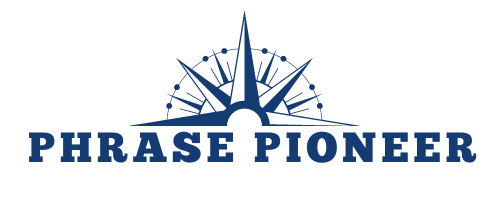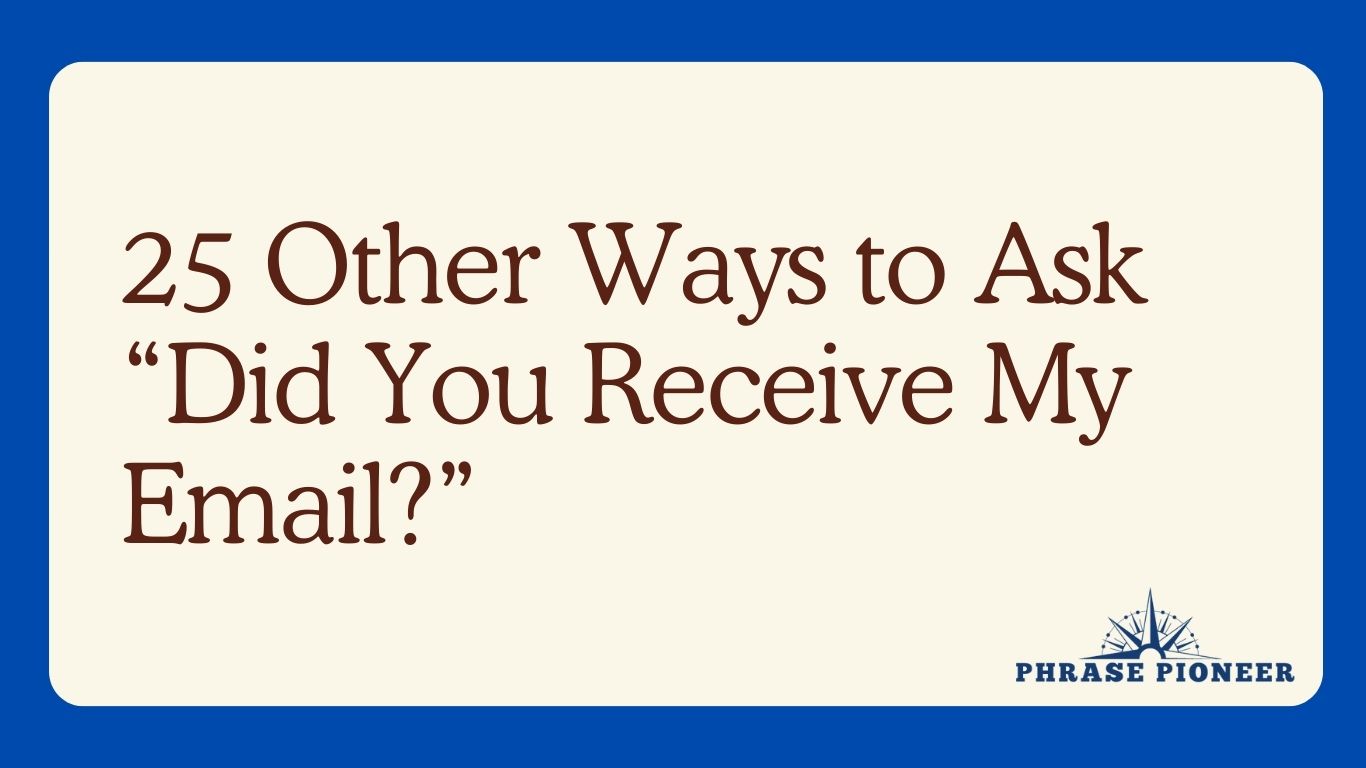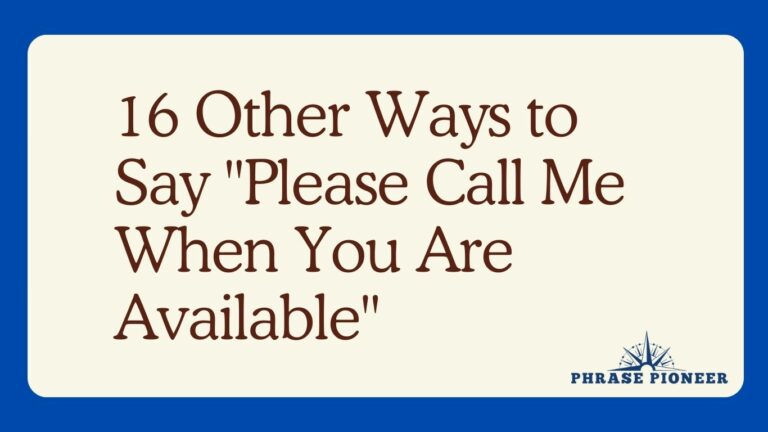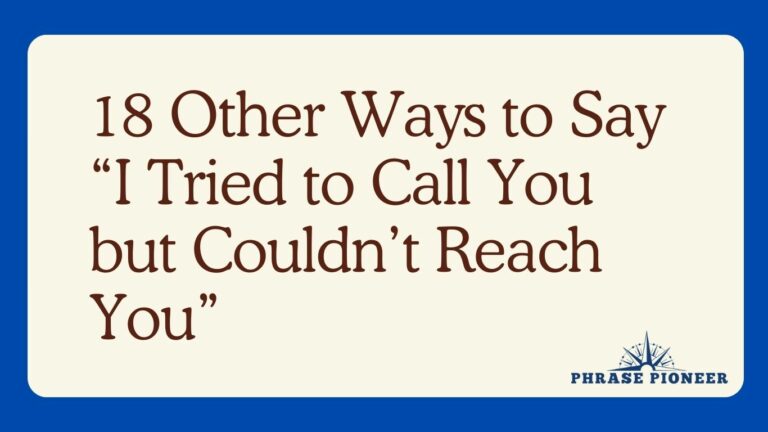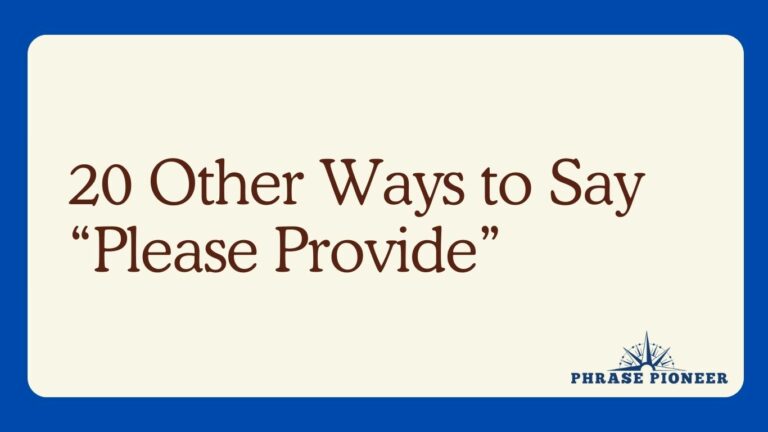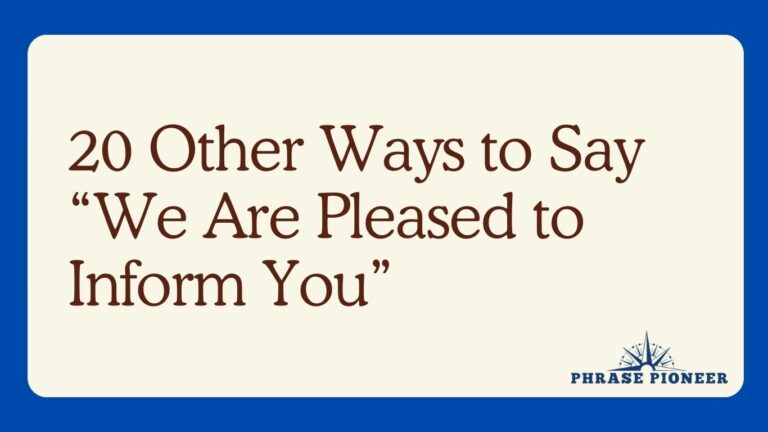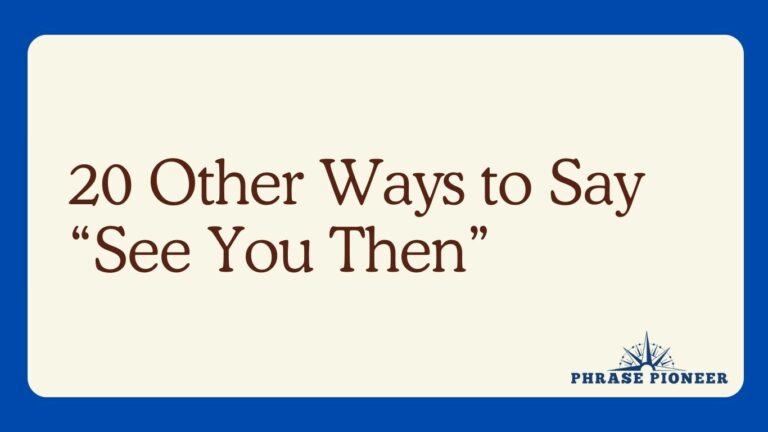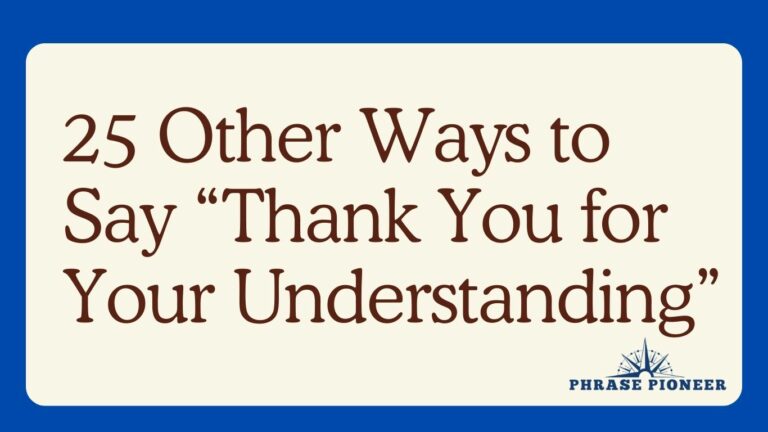25 Other Ways to Ask “Did You Receive My Email?”
In our digital age, emails are fundamental to communication, especially in the professional world.
However, with the influx of messages flooding inboxes daily, it’s not uncommon for some emails to be overlooked or lost in transit. It’s sometimes necessary to confirm receipt.
To do this politely and without presuming neglect, there are numerous ways to ask “Did you receive my email?” Here are 25 alternative phrases that allow you to check in on your sent email politely and effectively, suitable for different situations and relationships.
Formal Follow-ups
In professional environments or when communicating with individuals you don’t know well, formal phrasing is often preferred.
1. May I kindly confirm receipt of my recent email?
- Example: “May I kindly confirm receipt of my recent email regarding the meeting details?”
- Explanation: This courteous approach seeks confirmation without being intrusive.
2. I would like to inquire whether my previous message was delivered to you.
- Example: “I would like to inquire whether my previous message outlining the contract terms was delivered to you.”
- Explanation: Indicates a formal request for information regarding the status of an email.
3. Have you had the chance to review my email sent on [date]?
- Example: “Have you had the chance to review my email sent on Monday concerning the quarterly budget?”
- Explanation: Inquiring not only about receipt but also engagement with the email content.
Professional Contexts
Maintain a professional tone while directly addressing the need to confirm the email’s arrival.
4. Could you please confirm receipt of my previous correspondence?
- Example: “Could you please confirm receipt of my previous correspondence regarding the invoice?”
- Explanation: A polite but direct request for confirmation of email delivery.
5. I’m following up to ensure my email reached you.
- Example: “I’m following up to ensure my email regarding the project update reached you.”
- Explanation: States the purpose of the follow-up without implying any fault.
6. I was hoping to ascertain that you received my earlier communication.
- Example: “I was hoping to ascertain that you received my earlier communication regarding the partnership proposal.”
- Explanation: Uses formal language to confirm the earlier email without assuming it was missed.
Gentle Reminders
For situations where you want to remind gently, these phrases are effective without seeming pushy.
7. Just checking in to see if my email made it to your inbox.
- Example: “Just checking in to see if my email regarding our next meeting made it to your inbox.”
- Explanation: A light-hearted way of ensuring the email was received without demanding an immediate response.
8. I wanted to see if you had a moment to read my message.
- Example: “I wanted to see if you had a moment to read my message sent earlier this week.”
- Explanation: Frames the follow-up as a casual inquiry into the recipient’s availability to engage with the email.
9. I’m just circling back on the email I sent recently.
- Example: “I’m just circling back on the email I sent recently about rescheduling our appointment.”
- Explanation: A business-like way to follow up on a previous email by prompting recognition or action.
Enquiries Regarding Content
When it’s important to clarify content or instructions given in an email, these questions can be used.
10. Could you kindly confirm your understanding of my last email?
- Example: “Could you kindly confirm your understanding of my last email’s instructions for the database update?”
- Explanation: Asks for confirmation while also addressing the comprehension of the email’s content.
11. Did the details in my previous email come through clearly?
- Example: “Did the details in my previous email about the event sponsorship come through clearly?”
- Explanation: Inquires about both the receipt and the clarity of the information sent.
12. Was my email regarding [specific topic] received?
- Example: “Was my email regarding the software purchase proposal received?”
- Explanation: A direct question that makes it clear which email you are inquiring about.
Informal Check-Ins
In a casual context, or when you have a close working relationship with someone, an informal tone is appropriate.
13. Hey, just wanted to make sure you got my email?
- Example: “Hey, just wanted to make sure you got my email about tomorrow’s lunch plans?”
- Explanation: A friendly and informal way of checking in about the email, likely with someone you know well.
14. Did my last message find its way to you?
- Example: “Did my last message about the design mock-ups find its way to you?”
- Explanation: A casual but curious way to inquire about your message’s status.
15. Have you had a peek at my recent email?
- Example: “Morning! Have you had a peek at my recent email about the client feedback?”
- Explanation: Casual and light-hearted, this question inquires about both receipt and review of the email.
Urgency and Importance
When an email is particularly important or time-sensitive, it’s okay to convey a sense of urgency.
16. It’s imperative that I confirm my email’s arrival.
- Example: “Due to the urgency of the matter, it’s imperative that I confirm my email’s arrival regarding the server issue.”
- Explanation: States the necessity of confirmation due to the urgency of the content.
17. I need to verify you received my recent urgent email.
- Example: “I need to verify that you received my recent urgent email about the account security breach.”
- Explanation: Communicates the need for confirmation due to the email’s pressing attention.
18. Your prompt confirmation of my last email would be greatly appreciated.
- Example: “Your prompt confirmation of my last email outlining the deadline changes would be greatly appreciated.”
- Explanation: This request highlights the expectation of a swift response due to the importance of the email’s content.
Emphasizing Response or Action
When a response or specific action is required from an email, it’s crucial to draw attention to that fact clearly.
19. I’m eager to hear your thoughts on my last email.
- Example: “I’m eager to hear your thoughts on my last email regarding the marketing strategy.”
- Explanation: Indicates that feedback or a response to the email content is awaited.
20. Please confirm that my previous email’s action steps are in process.
- Example: “Please confirm that my previous email’s action steps regarding the team assignment are in process.”
- Explanation: Not only seeks confirmation of receipt but also progress on the actions requested.
21. Could you acknowledge receipt of my email, particularly the to-do list?
- Example: “Could you acknowledge receipt of my email, particularly the to-do list for the upcoming project launch?”
- Explanation: A request for confirmation, emphasizing a specific part of the email that needs attention.
Simple and Unassuming
Keeping it straightforward and simple works well in any context, espeically when you just need a quick confirmation.
22. Did you happen to see my email from earlier?
- Example: “I’m just checking in—did you happen to see my email from earlier about the budget report?”
- Explanation: A non-pressuring and straightforward way to ask for confirmation of receipt.
23. I’m reaching out to check if you received my recent email.
- Example: “I’m reaching out to check if you received my recent email regarding the upcoming conference.”
- Explanation: A basic and polite request for verification that the email was received.
24. I’m curious if my email made its way to you?
- Example: “I sent some proposals last Tuesday—I’m curious if that email made its way to you?”
- Explanation: Positions the follow-up as a question born of curiosity, rather than expectation or pressure.
25. Can you let me know when you get a chance to read my email?
- Example: “Can you let me know when you get a chance to read my email about the office redesign?”
- Explanation: Suggestion that the recipient review the email at their earliest convenience, without pressing for immediate confirmation.
Conclusion
Checking whether someone has received your email doesn’t have to be a moment of tension. With these 25 variations, you can appropriately match your inquiry to the context and level of formality required.
Whether you’re confirming an email’s receipt, ensuring your message was clear, or prompting a necessary action, these phrases can help you effectively communicate in a manner that’s respectful of the recipient’s time and attention.
Remember, the goal is to encourage a response or confirm understanding, while maintaining positive communication channels.
